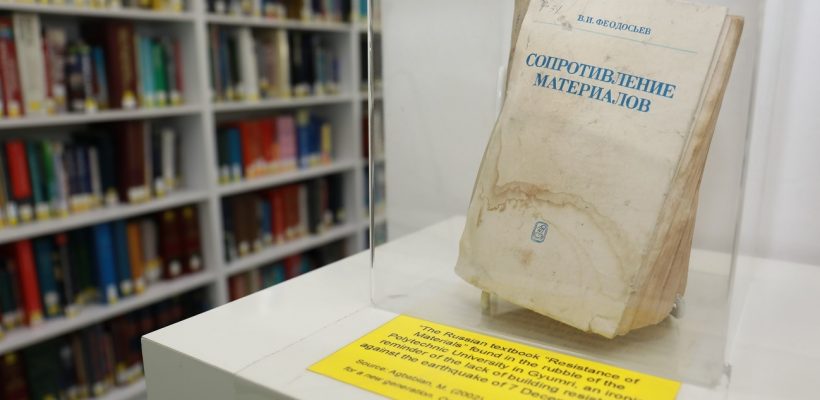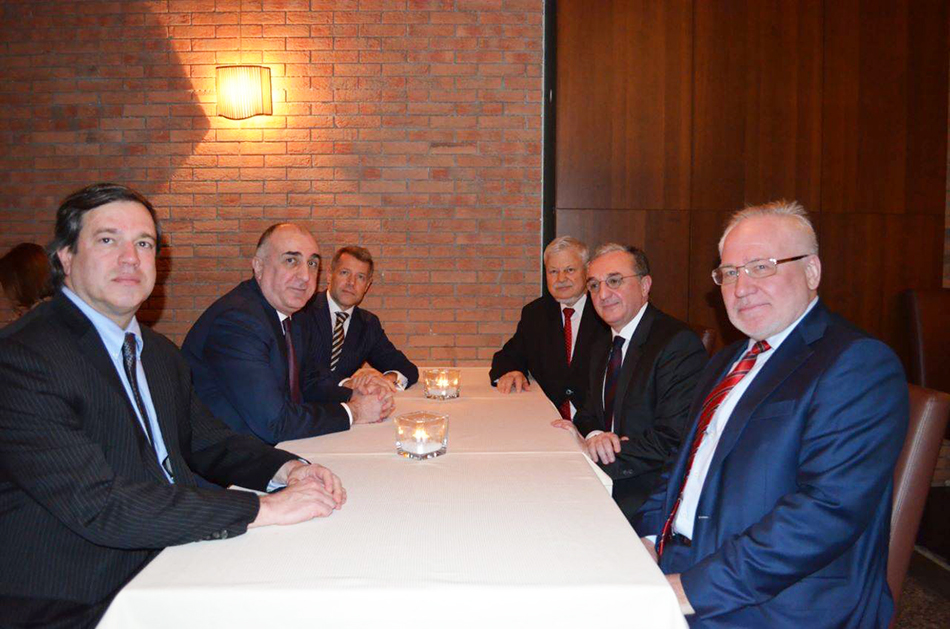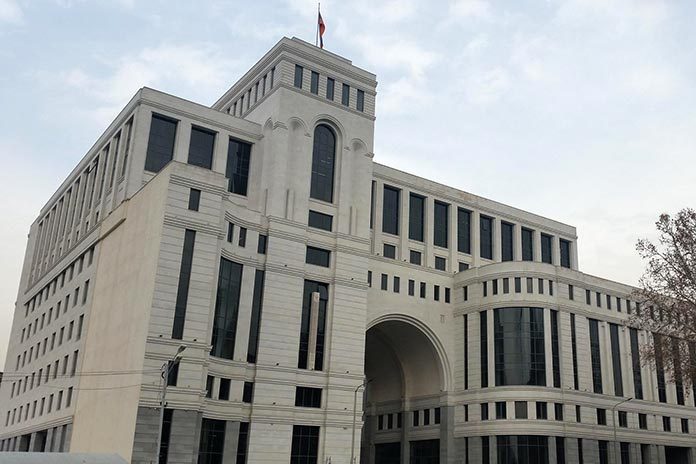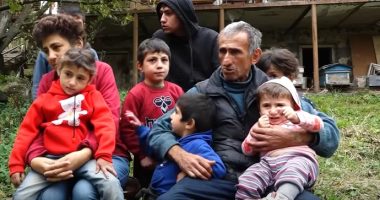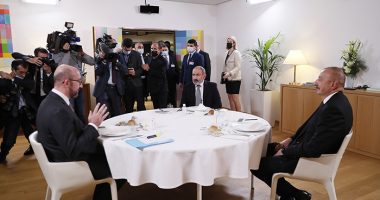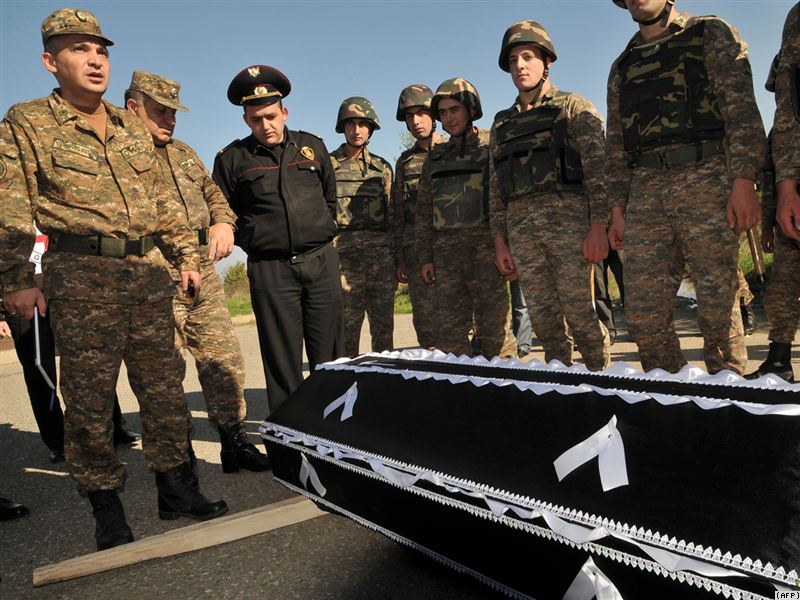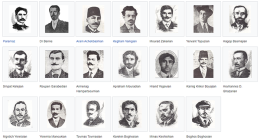AUA INSIDER — Thirty years ago a team of scientists and engineers, including American-Armenian professors of earthquake engineering Dr. Mihran Agbabian of the University of Southern California and Dr. Armen Der Kiureghian of the University of California (UC), Berkeley, was commissioned by the US National Academy of Sciences to travel to Soviet Armenia to assess the effects of the disastrous earthquake that shook the North of Armenia on December 7, 1988.
Now President of AUA, Dr. Der Kiureghian, recalls: “As earthquake engineers, Mihran and I went into the damaged buildings. We tried to understand why there was so much damage. Even the part of the Gyumri branch of Polytechnic University that was under construction had partially collapsed. There were many personal items scattered all around.”
It was then that Dr. Agbabian noticed the Russian textbook “Strength of Materials” by V. I. Feodosev in the rubble of the Polytechnic University. A textbook that had educated generations of Soviet engineers on the resistance of materials now raised questions on the reasons why the earthquake of 1988 had caused so much destruction. Had the engineers and builders of those structures followed the principles taught in that book, there would not have been so much destruction and damage, they thought.
“Mihran and I were very much affected by what we saw. We wanted to help. Our first idea was to select a group of young Armenian students and give them scholarships to study earthquake engineering in the United States, so they could be of service to their country upon their return,” said Dr. Der Kiureghian.
About two months later, the Soviet Union had organized an international conference where representatives of different countries came together to discuss the post-earthquake reconstruction and relief efforts in the North of Armenia. Dr. Der Kiureghian was the delegate from the United States. At a breakfast gathering with a group of faculty from the Yerevan Polytechnic Institute, Dr. Yuri Sargsyan, then the Rector of the Polytechnic, suggested the idea of bringing American-style education to Armenia. “I thought that the idea was not entirely impossible. I immediately pictured in my mind the American University of Beirut. With the improved relations between the US and the Soviet Union, it occurred to me that the political situation was right for setting up an American university here, in Armenia,” noted Dr. Der Kiureghian.
In March of 1989, Dr. Der Kiureghian together with Dr. Agbabian developed a proposal to establish an American-style university in Armenia as the diaspora’s long-term assistance to the homeland. Later on, Dr. Stepan Karamardian, Dean of Business at UC Riverside, joined the team. With the generous financial support of Louise Manoogian Simone, then Executive Vice President of the Armenian General Benevolent Union (AGBU), together with academic and administrative guidance provided by the UC, and the support of the Armenian government, the American University of Armenia came to life and opened its doors on September 21, 1991, the same day that the Armenian Parliament declared independence. During its first year of operation, the University received its first major grant from the American Schools and Hospitals Abroad (ASHA) program of the United States Agency for International Development (USAID), which allowed it to improve its facilities and capacity.
Initially, AUA had two colleges, the College of Business Management and the College of Engineering. The latter included the departments of Industrial Engineering and Earthquake Engineering, with the latter aimed at educating specialists who would work to prevent disasters such as the 1988 earthquake. Unfortunately, with the economic downturn in Armenia and lack of construction throughout the country, the number of applicants declined and the program had to be suspended. Dr. Der Kiureghian remarks: “I feel very sorry that the resources that were available then went to other programs and that we have not been able to restart the Earthquake Engineering program. I think we should. But that would require a significant amount of funding ? an endowment of five to ten million dollars ? to restart the program in Earthquake Engineering. It is an absolute necessity for Armenia.”
Though the book found in the earthquake rubble does not have a direct connection to the establishment of the University, “the genesis of AUA is the earthquake. In a way, finding the book showed that the lessons were not well learned, so there was a need for a better educational system. The irony of the book led to the idea of establishing a new university.” Were it not for the devastating earthquake and the events that followed, the American University of Armenia would not have become a reality.
In the winter of 2017, almost thirty years after finding the book, Dr. Agbabian donated it to the AUA’s AGBU Papazian Library. “When I saw the book for the first time, it immediately sparked my mind that we should allocate a special display for this valuable gift,” said AGBU Papazian Library Director Satenik Avakian. “We get many visitors to the Library: AUA students and faculty, other students and researchers from Armenian universities, guests from the diaspora and foreigners. Whenever they approach the display and read the message on the plate, they are deeply moved by the story ? the story of a book found in the 1988 earthquake rubble that triggered the founding of AUA.”

